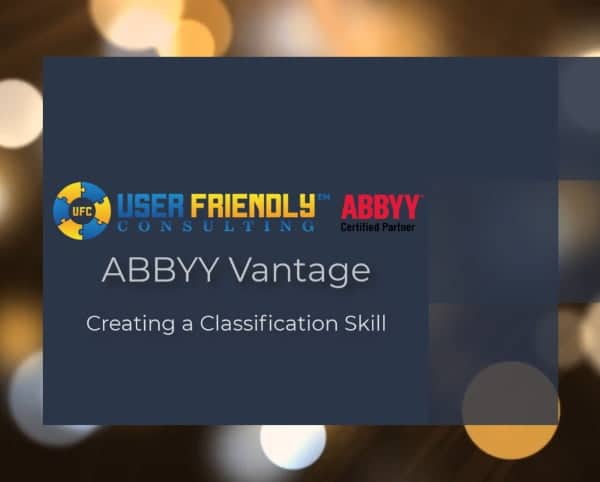Watch a video to discover the basics about how to get started with ABBYY Vantage, an AI based cognitive services data extraction platform.
Hello. Today I’d like to share with you ABBYY Vantage. The unique part of this platform is that it’s an easy and quick way to implement an OCR extraction process. Now, what you see in front of us is kind of our home screen. When we log in, this is where we go. On the left is our menu of our different options that we have. And on the middle is the content. Always the content about that specific menu item. And then on the right is an action screen, which always tells us what we can do in that context of that screen. Now, the document screen here is actually our sandbox. I’ll come back to this in a minute, but the sandbox is where we can upload documents and kind of see right now, right in front of us, the classification and extraction results.
One of the more important parts about ABBYY Vantage is understanding skills. We have three types of skills. We can teach the software about how to classify a document. Now, when we say classify, we mean, how do we determine the document type? One of the ways that we do that is by literally uploading samples of documents so that the software can see and start feeling what we call variants or classes of those documents. We have what are called document skills. So once the software knows a document type, we want to typically extract information on that document. And so that’s what a document skill does is we can upload samples in using machine learning, literally just lasso data and teach the software where information is found on documents that are either structured or completely unstructured.
And then lastly, we have a process skill. A process skill gives us the ability to bring everything together so we can allow the software to use classification skills and document skills, and literally map out a business process. In fact, I’ll show you one, just to give you an idea of what I mean. So here is a process skill. We have an input and we have certain actions or properties about that input. We have a classify step of the activity of the process. We have an extraction activity, we have some routing decisions, and then we have an output. And this is kind of bringing every one of those skills together to give us the ability to see our business process.
Here on the left, then going back to the menu is a manual review screen. So within this process, we can make certain conditions and decisions about when we send items for manual human in the loop review. And then of course we have an administration section here.
Let me go back however, to a couple of things that I didn’t share with you about skills. You have a skills catalog, which is where all of your skills live. You have a skills monitor, which tells you about the interaction of the skills. So you literally can see statistics about documents that are flowing through a specific skill. You can see throughput and you can see if items are lining up in a queue and you can see how long those skills are taking to run. And you can literally see event logs about every single transaction that takes place and this is typically helpful when we’re debugging and kind of seeing throughput expectations. So skills monitor is a more of an administrative review of how our skill is processing. Is it efficient and what do we need to do to make sure that that skill is rock solid? And then of course we have our skills designer. Remember I said there are three skills documents, classification, and process. Once again, the document skill is all about extraction. Teaching the software about extraction. Classification is teaching the software how to recognize different types of documents and then process skill is bringing it all together. So I just wanted to share this platform with you. This is a very unique opportunity for us to onboard a OCR extraction or classification process within minutes, and look forward to diving into this software with you. Thank you so much.



